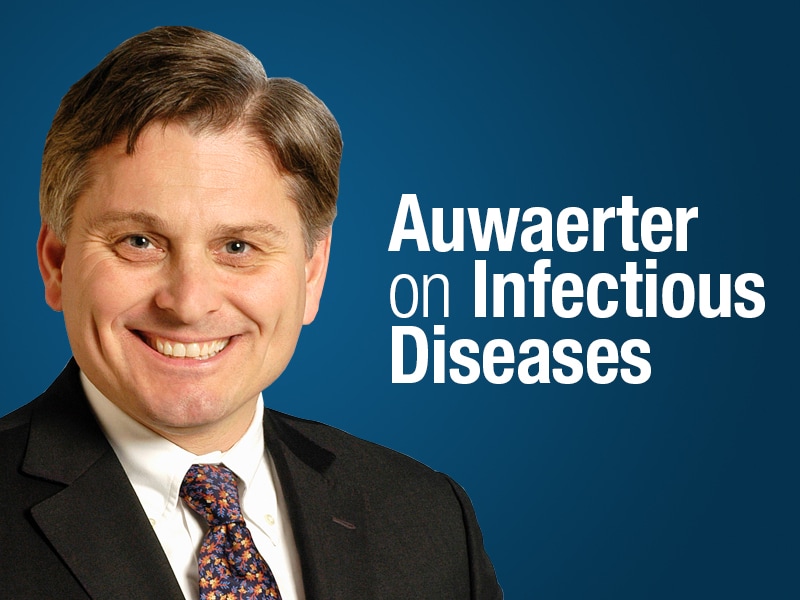This transcript has been edited for clarity.
Hello. I’m Paul Auwaerter with Medscape Infectious Diseases, speaking from the Johns Hopkins University School of Medicine.
Monkeypox joins the legion of occasional emerging infectious diseases that, as an infectious diseases consultant, we have to become at least familiar with, even if we’ve never seen it personally, and consider it when the occasion arises.
Monkeypox is a member of the orthopoxvirus family, which is the same as smallpox. It is generally a milder infection that causes very similar diseases, which I’ve never seen clinically, with the exception of one laboratory-acquired case of generalized vaccinia in a lab worker many years ago that we diagnosed by electron microscopy.
The current situation with monkeypox has certainly been in the news following an outbreak that, as of late May, has at least 260 cases in 19 countries, including many European countries, Argentina, and Australia, and also here in the United States, with at least 6 states reporting infections, including California, New York, Massachusetts, and Florida.
Monkeypox is something that we’ve seen before in the US. In 2003, there was an outbreak of 71 suspected or confirmed cases that were traced to the importation of Gambian giant rats, squirrels, or dormice that had spread to prairie dogs that were subsequently sold as pets. In all, 18 people were hospitalized, but there were no deaths, certainly suggesting a milder illness and that a higher mortality is seen with smallpox.
We don’t know much about monkeypox. Although it can reside in monkeys and be transmitted by that pathway, the thought is it probably has a reservoir more frequently seen in rodents. Acquisition to humans could be from handling infected animals or transmission through skin or mucous membranes, but it is mostly thought to be large droplet–related, because this is a large DNA virus and probably not prone to aerosolization.
The current outbreak here, in 2022, isn’t exactly clear, but there have been descriptions in Europe that certain social networks — such as, for example, men who have sex with men — may be contributing to the spread. Therefore, it needs to be considered also in the spectrum of, perhaps, a sexually transmitted disease (STD) when we’re evaluating patients.
From acquisition to acquiring symptoms can range from 5 to 21 days, with a 1- to 2-week average. The initial infection is, indeed, just a viral-like prodrome: sometimes a sore throat or lesions, with a rash that typically begins 1-3 days later, initially a viral-type exanthema that’s not specific. Flat or macular to papular lesions subsequently become nodular, umbilicated, or pustulovesicular before crusting. They classically occur on the face and then spread elsewhere to the body, with involvement of the palms and soles, which certainly makes it different from other things that might be on your differential, such as chickenpox. You may have some lymphadenitis as well.
The differential diagnosis, of course, comes up with primary infection with varicella, but other pox infections — cowpox, or smallpox if there’s a bioterror event — maybe should be considered if you’re thinking of measles or sexually transmitted infections (STIs), such as syphilis, herpes simplex virus (HSV), or chancroid.
How to diagnose it is, unfortunately, not straightforward. Neither a commercial laboratory nor your health system laboratory will be able to make the diagnosis, so you need to contact your local or state health department. There are links below this video for the CDC’s monkeypox site, where there is specimen collection information for obtaining direct skin lesion material for PCR analysis that can help confirm.
Generally, the skin is where you see most of this infection. Occasionally, if it’s severe, in patients with elevated fever or more than 100 lesions, especially in children, it can be quite awful and include pneumonitis. You may need to also consider proctitis if there is sexual transmission.
In terms of treatment, there are no approved treatments and most have been lifted from smallpox. There are now two FDA-approved oral drugs that seem to have broad in vitro poxvirus activity, including tecovirimat, which is FDA approved for smallpox in adults and children, and brincidofovir, a variant of cidofovir, which also can be used in people as young as the neonatal age range.
Other modalities could include a vaccinia immunoglobulin, hoping that there’s cross-reactivity. In terms of prevention, there is the smallpox vaccine available on limited supply, and also a modified vaccinia that has fewer side effects than typical vaccinia virus that goes by the trade name Jynneos. It’s available in very limited supply, but if you have a case with potential contacts, it might be considered, or it may be considered as adjuvant therapy for someone who’s infected.
There’s nothing well known or described. There’s a handful of case reports and a nice study out of the UK summarizing experience with monkeypox and some of these newer treatments, but it is uncertain whether they had an impact on outcomes or quicker resolution of illness, given the limited number of data points.
These are all things that I think will continue to evolve. Certainly, it sounds like this is the largest outbreak of monkeypox to date and it bears watching. Many have opined that they don’t think this will become significant from a public health standpoint, but it certainly bears watching and consideration by infectious disease consultants when evaluating certain patient types.
Thanks so much for listening. I hope this is helpful. Please see the background information if you need more. Thank you.
Follow Medscape on Facebook, Twitter, Instagram, and YouTube

